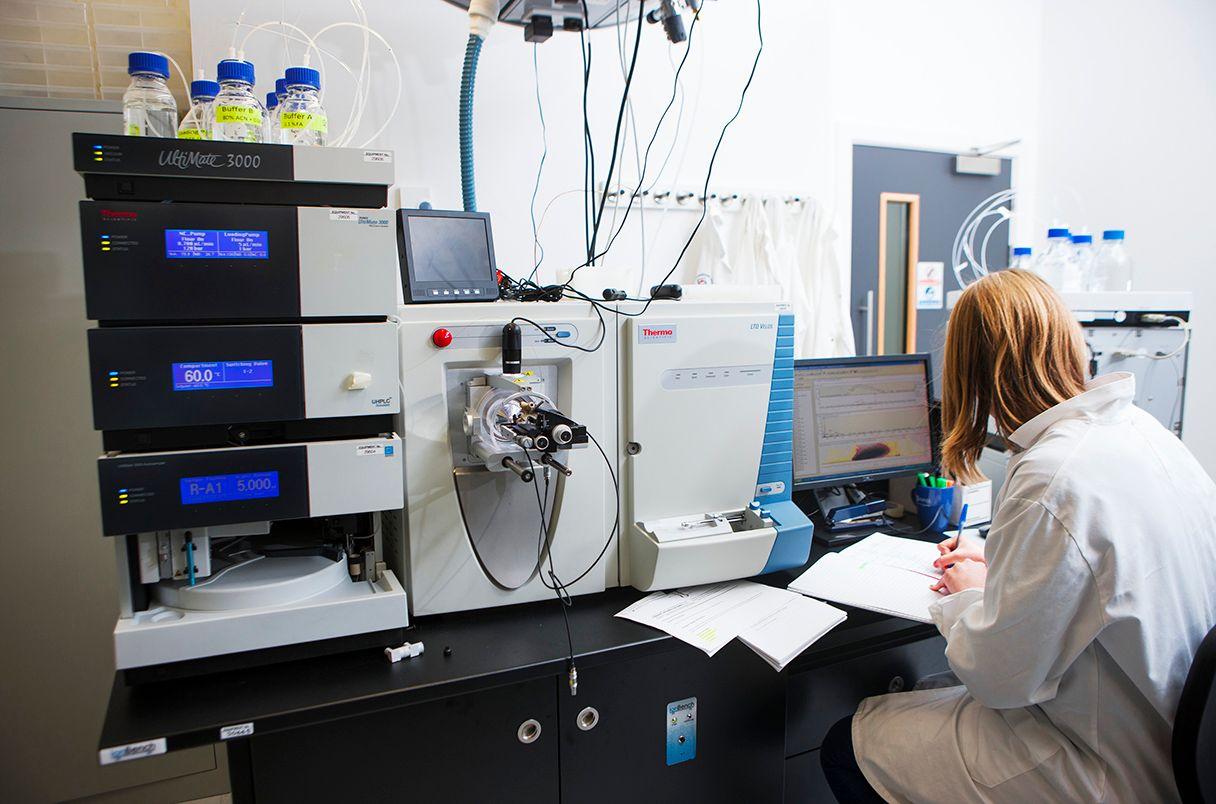AI-Powered AiCE Method Revolutionizes Protein Engineering
2 Sources
2 Sources
[1]
AI-powered strategy streamlines protein engineering by integrating structural and evolutionary constraints
A team of researchers has developed a method that could transform the field of protein engineering. The new approach, called AI-informed Constraints for protein Engineering (AiCE), enables rapid and efficient protein evolution by integrating structural and evolutionary constraints into a generic inverse folding model -- without the need to train specialized artificial intelligence (AI) models. The study, published in Cell on July 7, addresses many of the challenges associated with traditional protein engineering techniques. The team was led by Prof. Gao Caixia from the Institute of Genetics and Developmental Biology (IGDB) of the Chinese Academy of Sciences. The ideal protein engineering strategy would achieve optimal performance with minimal effort. However, existing approaches are often limited in terms of cost, efficiency, and scalability. Current AI-based protein engineering methods are often computationally intensive, underscoring the need for more accessible and user-friendly alternatives that preserve predictive accuracy and enable broader adoption across the research community. In this study, the researchers first developed AiCE, a module designed to predict high-fitness (HF) single amino acid substitutions. It enhances prediction accuracy by extensively sampling inverse folding models -- AI models that generate compatible amino acid sequences based on protein 3D structures -- while incorporating structural constraints. Benchmarking against 60 deep mutational scanning (DMS) datasets demonstrated that AiCE outperforms other AI-based methods by 36-90%. Its effectiveness for complex proteins and protein-nucleic acid complexes was also validated. Notably, incorporating structural constraints alone yielded a 37% improvement in accuracy. To address the challenge of negative epistatic interactions in combinatorial mutations, the researchers developed the AiCE module, which integrates evolutionary coupling constraints. This allows for accurate prediction of multiple high-fitness mutations at minimal computational cost, expanding the tool's versatility and practical utility. Using the AiCE framework, the researchers successfully evolved eight proteins with diverse structures and functions, including deaminases, nuclear localization sequences, nucleases, and reverse transcriptases. These engineered proteins have enabled the creation of several next-generation base editors for applications in precision medicine and molecular breeding. These include: enABE8e, a cytosine base editor with a ~50% narrower editing window; enSdd6-CBE, an adenine base editor with 1.3× higher fidelity; and enDdd1-DdCBE, a mitochondrial base editor showing a 13× increase in activity. AiCE represents a simple, efficient and broadly applicable strategy for protein engineering. By unlocking the potential of existing AI models, it offers a promising new direction for the field and enhances the interpretability of AI-driven protein redesign.
[2]
New AI-informed method accelerates protein engineering
Chinese Academy of SciencesJul 7 2025 A team of Chinese researchers led by Prof. GAO Caixia from the Institute of Genetics and Developmental Biology (IGDB) of the Chinese Academy of Sciences has developed a groundbreaking method that could transform the field of protein engineering. The new approach, called AI-informed Constraints for protein Engineering (AiCE), enables rapid and efficient protein evolution by integrating structural and evolutionary constraints into a generic inverse folding model-without the need to train specialized artificial intelligence (AI) models. The study, published in Cell on July 7, addresses many of the challenges associated with traditional protein engineering techniques. The ideal protein engineering strategy would achieve optimal performance with minimal effort. However, existing approaches are often limited in terms of cost, efficiency, and scalability. Current AI-based protein engineering methods are often computationally intensive, underscoring the need for more accessible and user-friendly alternatives that preserve predictive accuracy and enable broader adoption across the research community. In this study, the researchers first developed AiCEsingle, a module designed to predict high-fitness (HF) single amino acid substitutions. It enhances prediction accuracy by extensively sampling inverse folding models-AI models that generate compatible amino acid sequences based on protein 3D structures-while incorporating structural constraints. Benchmarking against 60 deep mutational scanning (DMS) datasets demonstrated that AiCEsingle outperforms other AI-based methods by 36-90%. Its effectiveness for complex proteins and protein-nucleic acid complexes was also validated. Notably, incorporating structural constraints alone yielded a 37% improvement in accuracy. To address the challenge of negative epistatic interactions in combinatorial mutations, the researchers developed the AiCEmulti module, which integrates evolutionary coupling constraints. This allows for accurate prediction of multiple high-fitness mutations at minimal computational cost, expanding the tool's versatility and practical utility. Using the AiCE framework, the researchers successfully evolved eight proteins with diverse structures and functions, including deaminases, nuclear localization sequences, nucleases, and reverse transcriptases. These engineered proteins have enabled the creation of several next-generation base editors for applications in precision medicine and molecular breeding. These include: enABE8e, a cytosine base editor with a ~50% narrower editing window; enSdd6-CBE, an adenine base editor with 1.3× higher fidelity; and enDdd1-DdCBE, a mitochondrial base editor showing a 13× increase in activity. AiCE represents a simple, efficient and broadly applicable strategy for protein engineering. By unlocking the potential of existing AI models, it offers a promising new direction for the field and enhances the interpretability of AI-driven protein redesign. Chinese Academy of Sciences Journal reference: Fei, H., et al. (2025). Advancing protein evolution with inverse folding models integrating structural and evolutionary constraints. Cell. doi.org/10.1016/j.cell.2025.06.014.
Share
Share
Copy Link
Chinese researchers develop a groundbreaking AI-informed method called AiCE that accelerates protein engineering by integrating structural and evolutionary constraints, outperforming existing AI-based methods.
Revolutionizing Protein Engineering with AI
A team of Chinese researchers, led by Prof. GAO Caixia from the Institute of Genetics and Developmental Biology (IGDB) of the Chinese Academy of Sciences, has developed a groundbreaking method that could transform the field of protein engineering. The new approach, called AI-informed Constraints for protein Engineering (AiCE), enables rapid and efficient protein evolution by integrating structural and evolutionary constraints into a generic inverse folding model
1
2
.The AiCE Framework
The AiCE framework consists of two main modules:
- AiCEsingle: This module is designed to predict high-fitness (HF) single amino acid substitutions. It enhances prediction accuracy by extensively sampling inverse folding models - AI models that generate compatible amino acid sequences based on protein 3D structures - while incorporating structural constraints
1
.

Source: Phys.org
- AiCEmulti: This module addresses the challenge of negative epistatic interactions in combinatorial mutations by integrating evolutionary coupling constraints. It allows for accurate prediction of multiple high-fitness mutations at minimal computational cost
2
.
Outperforming Existing Methods
The researchers benchmarked AiCEsingle against 60 deep mutational scanning (DMS) datasets, demonstrating that it outperforms other AI-based methods by 36-90%. The effectiveness of AiCE was validated for complex proteins and protein-nucleic acid complexes. Notably, incorporating structural constraints alone yielded a 37% improvement in accuracy
1
2
.Practical Applications
Using the AiCE framework, the researchers successfully evolved eight proteins with diverse structures and functions, including deaminases, nuclear localization sequences, nucleases, and reverse transcriptases. These engineered proteins have enabled the creation of several next-generation base editors for applications in precision medicine and molecular breeding
1
2
.
Source: News-Medical
Some notable achievements include:
- enABE8e: A cytosine base editor with a ~50% narrower editing window
- enSdd6-CBE: An adenine base editor with 1.3× higher fidelity
- enDdd1-DdCBE: A mitochondrial base editor showing a 13× increase in activity
Related Stories
Advantages of AiCE
The AiCE method addresses several limitations of traditional protein engineering techniques:
-
Efficiency: It achieves optimal performance with minimal effort, overcoming the cost and scalability issues of existing approaches
1
2
. -
Accessibility: Unlike current AI-based protein engineering methods that are often computationally intensive, AiCE offers a more accessible and user-friendly alternative
1
2
. -
Versatility: The method is broadly applicable to various protein engineering tasks, expanding its practical utility across different research areas
1
2
. -
Interpretability: AiCE enhances the interpretability of AI-driven protein redesign, offering insights into the process of protein evolution
1
2
.
Future Implications
The development of AiCE represents a significant advancement in the field of protein engineering. By unlocking the potential of existing AI models and integrating structural and evolutionary constraints, it offers a promising new direction for researchers. The method's ability to create next-generation base editors has important implications for precision medicine and molecular breeding, potentially accelerating progress in these crucial areas of study
1
2
.As the field of AI continues to evolve, methods like AiCE demonstrate the potential for AI to revolutionize complex scientific processes, making them more efficient, accessible, and powerful. This breakthrough could lead to faster development of new proteins for various applications, from medical treatments to industrial processes, ultimately benefiting society at large.
References
Summarized by
Navi
[1]
[2]
Related Stories
AI-Powered Protein Engineering: EVOLVEpro Revolutionizes Protein Design for Medical and Environmental Applications
22 Nov 2024•Science and Research

AI Revolutionizes Protein Sequencing: InstaNovo Models Enhance Accuracy and Discovery
31 Mar 2025•Science and Research

AI Breakthrough: Designing Life-Like Enzymes from Scratch
14 Feb 2025•Science and Research

Recent Highlights
1
X's Paywall Doesn't Stop Grok From Generating Nonconsensual Deepfakes and Explicit Images
Policy and Regulation

2
Nvidia Vera Rubin architecture slashes AI costs by 10x with advanced networking at its core
Technology

3
OpenAI launches ChatGPT Health to connect medical records to AI amid accuracy concerns
Technology





